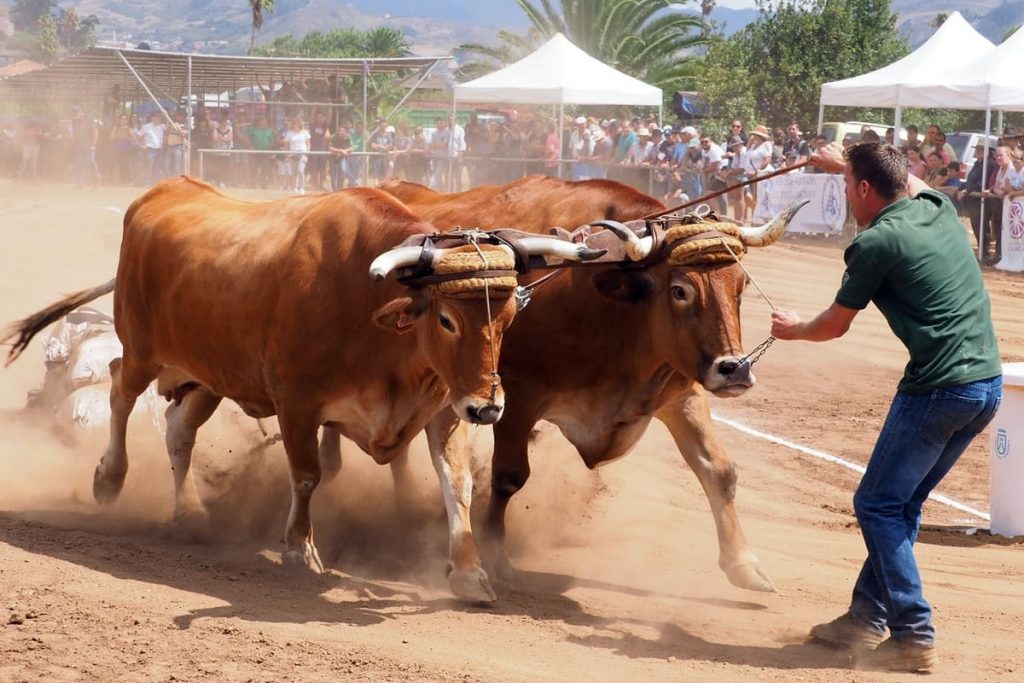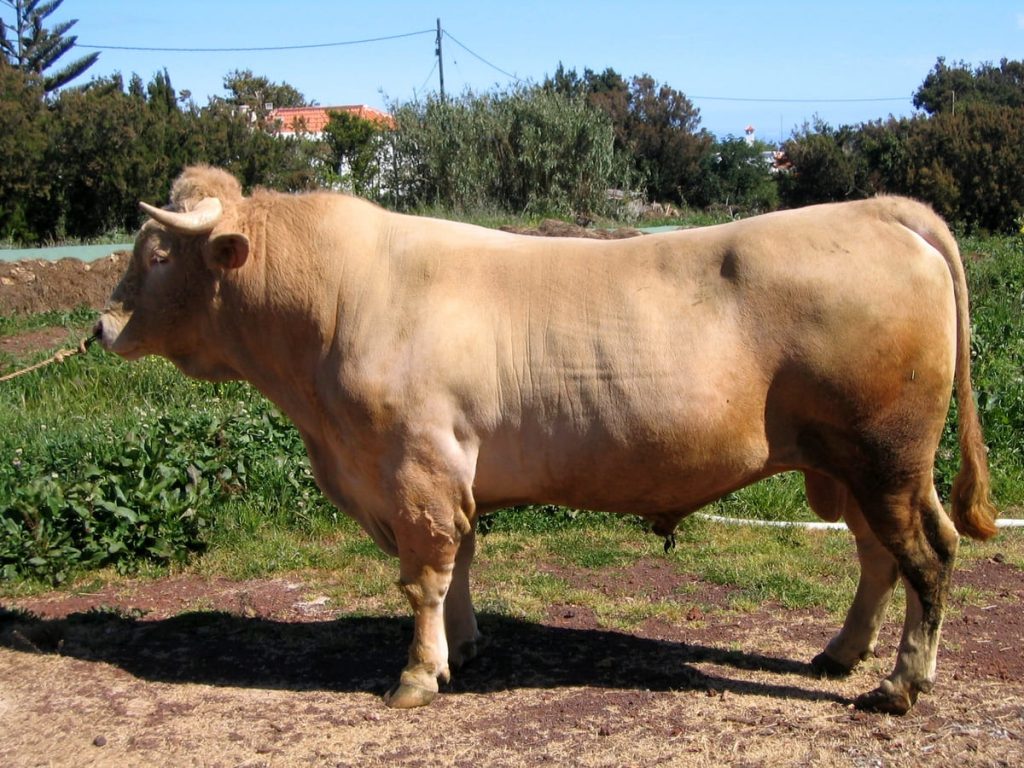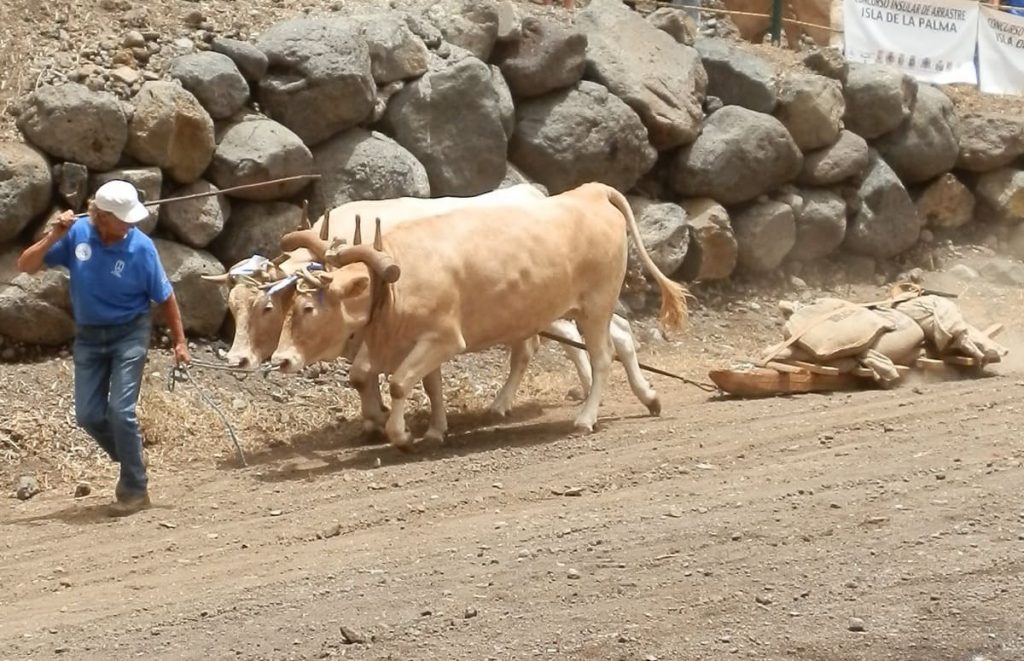Cattle dragging is a traditional sport practiced in the Canary Islands, with regular competitions in Tenerife, Gran Canaria and La Palma. For the practice of this sport, cows and bulls belonging to the so-called "Canarian cattle breed", also called "raza basta" on the island of Tenerife and "criolla" or "del país" in Gran Canaria, are used.
The Canary Island cattle breed is composed of animals with a marked hardiness, gentle character and great longevity. In addition, it is one of the few cattle breeds that can be included in the triple aptitude, that is, milk, meat and work.

The versatility of the Canarian cattle breed has ensured its survival to the present day and its draught ability is what has led to the breed's new status through cattle pulling competitions.
History of the sport, what is cattle pulling?
Cattle pulling was linked to the process of selecting the most suitable cattle to work in the fields. Their owners challenged each other to see which team was the strongest or most resistant to carry out the work in the fields or to transport materials.

In 1938, Don Pedro López Zumel, municipal veterinarian of La Laguna, in Tenerife, incorporated the dragging of cattle in the framework of the festivities in honor of the Santísimo Cristo de La Laguna, creating a regulation that no longer exists today. Thus, this hobby became very important until the 1960s.
Finally, in 1996, theFederación de Arrastre Canario was created . At present, the different tests usually take place on the occasion of the festivities of each town.
Cattle hauling and its characteristics
To carry out the dragging, each herd of cattle must make a round trip of 35 meters dragging a determined weight with a limit of three minutes. The winner will be the cattle that completes it in the shortest time. Each yunta must be made up of cows or bulls; they may not be mixed. These are registered in different categories according to the weight they will drag during the test.

The person who guides the yunta during the dragging is called "guayero" or "boyero". Traditionally, guayeros have always been adult men, although nowadays women also participate. Since 2008 there has also been a children's league for cattle pulling.
Characteristics of the terrain
The field where the tests are carried out should be rectangular and 50 meters long and 15 meters wide. The surface should be compact, preferably of earth so that the hooves of the animals have a good grip.
The materials
The materials necessary to carry out a cattle dragging test are: a yoke, a chain, a stick with which to "touch" the animals, sacks weighing 100 kg and a corsa, where the sacks are placed. To the total weight of the sacks must be added the almost 200 kg that the corsa weighs and the friction between the corsa and the surface of the ground on which it is dragged.
Canary Islands cattle breed association
The Asociación Canaria de Arrastre Fomento y Crianza del Ganado Basto y Nacional de Criadores de Vacuno Selecto de la Raza Canaria (ACA) began its work in 1998 to register the basta de la tierra canaria breed, creating the Genealogical Book of this breed in 2003.
Its objectives are to promote, protect and maintain livestock in the Canary Islands, more specifically to maintain the Canary Island cattle breed. Although this Association has its headquarters in Tenerife, it has a national character, thus covering any territory where this type of cattle breed exists.
Paula Vera
Photos: agoratogan.com and Gobierno de Canarias



